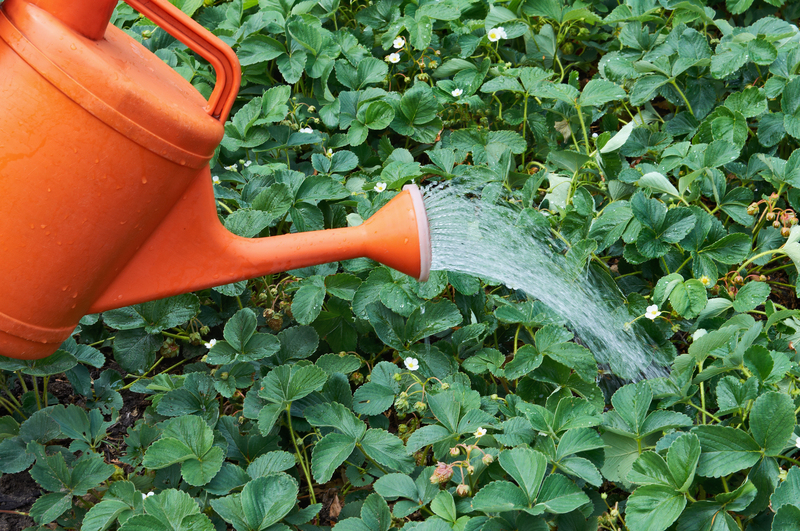Killing Stumps Using Common Household Items: A Complete, Google-Friendly Guide
Tree stumps in your yard can be more than just an eyesore. They interrupt your landscaping plans, can be hazardous for trips and falls, and sometimes even resprout or become a nursery for pests. Before you call in the expensive professionals or rent heavy machinery, consider this comprehensive guide to killing stumps using common household items. Not only is this approach cost-effective, but it also offers an environmentally friendly option for managing pesky stumps without relying on harsh chemicals.

Contents
- Why Remove Tree Stumps?
- Household Stump Killing Methods
- How to Choose the Right Method
- Detailed Steps for Each Method
- Safety and Environmental Tips
- Frequently Asked Questions
Why Remove Tree Stumps?
Old stumps aren't just unsightly--they can harbor pests like termites and ants, encourage new unwanted shoots to grow, and can even damage your lawn mower or lawn aesthetics. Killing stumps using household products provides a safer, chemical-free alternative to purchased stump removers. Let's delve into the most effective means for homemade stump killing solutions.
Top Methods for Killing Tree Stumps with Household Items
This section explores the best ways of destroying tree stumps using easily available items. These methods are not only effective but also wallet-friendly and eco-conscious:
- Table Salt: Commonly found in kitchens, salt draws moisture from the wood, accelerating its decay.
- Vinegar: White vinegar's acetic acid can kill fungus and inhibit stump regrowth.
- Boiling Water: Simple, accessible, and surprisingly powerful at killing roots.
- Plastic Covering: Cutting off sunlight--necessary for regrowth--with plastic sheeting.
- Hot Water and Epsom Salt Combination: Epsom salts are easy to find and used in combination with hot water can hasten stump death.
- Homemade Herbicide Mixes: Mixtures of vinegar, salt, and dish soap can break down stump tissues.
How to Choose the Best DIY Stump-Killing Technique
Each method to kill stumps with household materials has pros, cons, and best-use scenarios. Before starting your stump elimination project, consider the following factors:
- Stump Size: Large, old stumps may need a combination of methods or repeated applications.
- Tree Species: Some species, like maple or willow, are more persistent and resilient.
- Location: Nearby garden beds, pets, and children may require safer or less toxic approaches.
- Time Frame: Chemical or physical breakdown is slow, requiring patience--these are not instant fixes!
Killing Tree Stumps with Common Household Items: Step-by-Step Instructions
1. Using Table Salt to Eliminate Tree Stumps
- Drill Holes: With a power drill, create deep holes (about 8-10 inches) across the top and sides of the stump.
- Pour Salt: Fill each hole with ordinary table salt, packing it in as tightly as possible.
- Seal Off: Place candle wax or old plastic to cover the holes--prevents salt from washing away.
- Monitor: Reapply salt every 4 weeks for several months until the stump becomes brittle and starts to rot.
Tip: For large stumps, increase the number of holes for greater salt penetration.
2. Applying Vinegar for Stump Destruction
- Drill Holes: Just as with salt, create deep holes or grooves in the stump top.
- Pour Vinegar: Fill a spray bottle or watering can with undiluted white vinegar and saturate the holes and exposed roots.
- Repeat: For best results, repeat this process weekly. Roots will dehydrate, making regrowth unlikely.
White vinegar works best, but apple cider vinegar has similar properties.
3. Killing Stumps with Boiling Water
- Boil Several Gallons of Water: Use caution; boiling water is extremely dangerous.
- Pour Over Stump and Roots: Slowly and carefully pour directly over the exposed wood and any visible roots.
- Repeat as Needed: Repeat weekly. This method cooks the tissues, killing living cells and hastening rot.
- Note: Particularly effective for smaller stumps or surface roots.
4. Smothering with Plastic Sheeting
- Cut Plastic: Heavy-duty black plastic garbage bags or landscaping plastic work best.
- Cover Stump: Completely cover the stump and immediate surrounding soil.
- Weigh Down: Use bricks, stones, or soil to weigh down edges, sealing out airflow and sunlight.
- Wait: Leave covered for several months--the lack of sunlight will starve the stump, killing regrowth and speeding decomposition.
This is a clean and child-safe option for visible or high-traffic spaces.
5. Epsom Salt and Hot Water Stump Treatment
- Mix: Dissolve two cups of Epsom salts in a gallon of hot water.
- Apply: Pour the solution liberally over drilled holes and the stump surface.
- Repeat: Reapply every two weeks. Epsom salt draws moisture out and introduces magnesium sulfate, desiccating tissue.
6. Homemade Herbicide - Vinegar, Salt, Dish Soap
- Mix Ingredients: Combine a gallon of white vinegar, one cup salt, and 1-2 tablespoons dish soap.
- Apply: Pour or spray onto the stump's cut surface and root areas.
- Repeat Application: Every few weeks for stubborn or large stumps.
The soap helps this blend stick to the wood and penetrate more deeply.
Safety and Eco-Friendly Tips for Household Stump Killing
- Wear Gloves and Eye Protection: Even household products like vinegar can irritate skin or eyes.
- Keep Pets and Children Away: Especially when using salt or concentrated solutions.
- Use Water Wisely: Do not saturate your lawn with salt or vinegar, as this can harm surrounding plants.
- Check Local Regulations: Some communities have guidelines on herbicide use--even homemade blends should be disposed of properly.
- Monitor for Regrowth: Some persistent species may need ongoing attention or follow-up applications.
- Composting: Once the stump is soft and rotted, chop it up and add it to your compost pile--just ensure it's pest-free.
Never burn tree stumps treated with chemical products. This can release toxic fumes and is prohibited in many areas.
Frequently Asked Questions About Killing Stumps with Household Items
-
Q: How long does it take to kill a tree stump with salt or vinegar?
A: Most methods take several months. Salt and vinegar work by dehydrating the wood, which is a slow, natural process but avoids the need for harsh commercial chemicals. -
Q: Will salt or vinegar damage my soil?
A: Yes, excessive salt and vinegar can damage surrounding plant life and linger in the soil. Use sparingly and only for targeted stump application, not full-area saturation. -
Q: Can I plant new trees in the same spot?
A: It's best to wait until the stump and roots are fully rotted and the soil has recovered. Flush the area with water after stump removal and consider adding fresh topsoil before planting new trees. -
Q: Is there a 'best' homemade method?
A: The best approach depends on your unique situation. Stubborn or large stumps may require a combination of methods or repeated applications for total effectiveness.

Conclusion: Eco-Friendly Stump Removal on a Budget
When faced with that pesky leftover trunk, killing stumps using standard household items provides effective, natural solutions without resorting to toxic chemicals or heavy machinery. With a little patience, these DIY techniques will help you reclaim your landscape, reduce hazards, and maintain healthy, beautiful outdoor spaces.
Ready to tackle your landscape? Try one of these home methods for stump killing today, and enjoy a smoother, safer, and more attractive yard--naturally!
Keywords featured: Killing stumps using common household items, homemade stump killer, kill stumps with household items, destroy tree stumps naturally, DIY stump removal, eco-friendly stump removal, how to kill a tree stump with salt, vinegar, boiling water, home solutions for tree stump removal